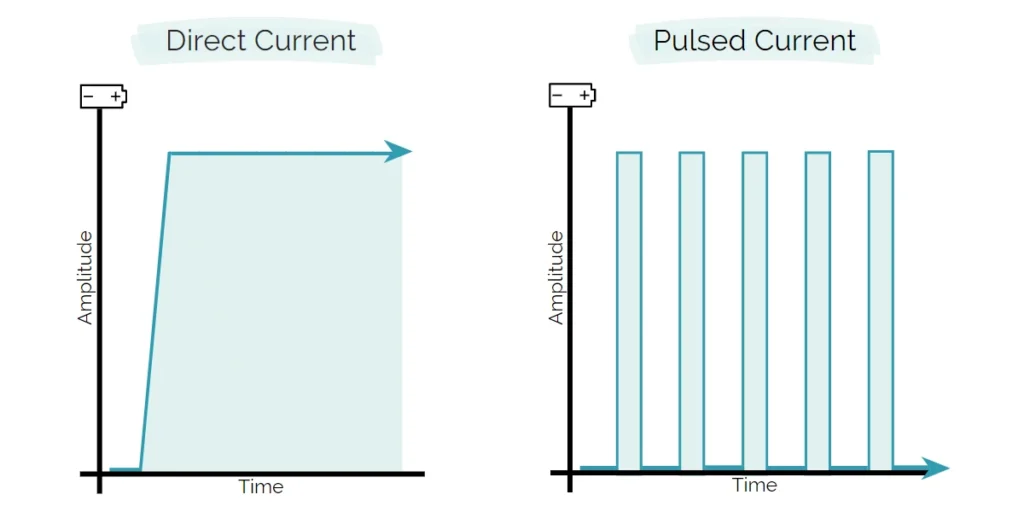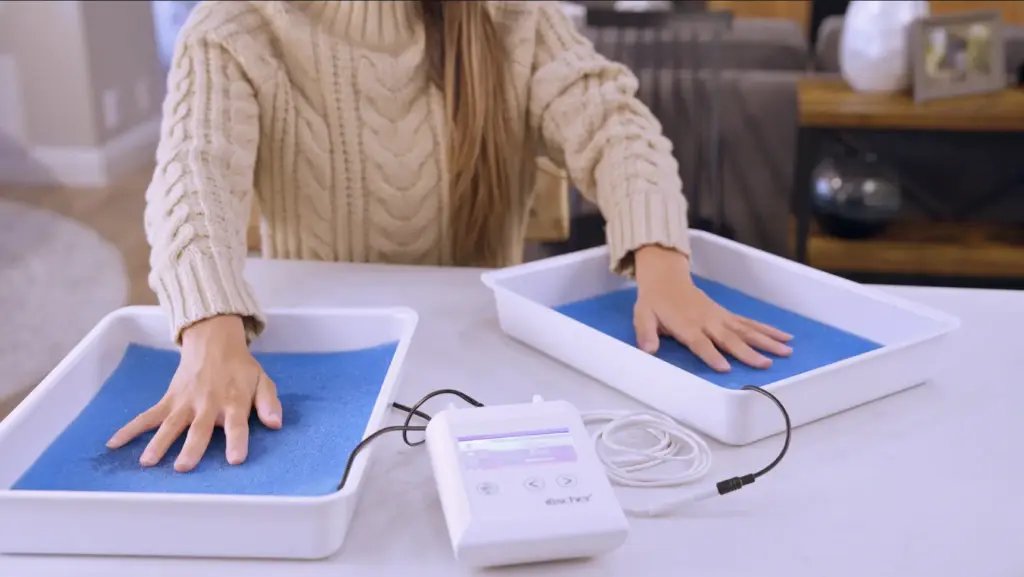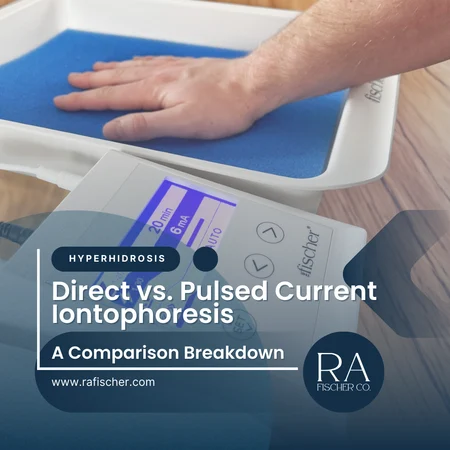March 31, 2020
By
Daniel Moyer
Direct vs. Pulsed Current Iontophoresis: Comparison Breakdown
When it comes to treating hyperhidrosis, patients often ask: “Which iontophoresis method should I choose: direct current (DC) or pulsed current (PC)?” This question is crucial for finding the right balance between effectiveness and comfort. Fortunately, The Fischer iontophoresis device offers both options, allowing patients to customize their treatment.
Direct vs. Pulsed Current Iontophoresis
Understanding Direct Current (DC) Iontophoresis
Direct current (DC) provides a constant, one-directional flow of charged particles throughout the treatment. Because of this, it creates a stronger chemical effect on the skin tissue, leading to faster therapeutic results.
Key Features of Direct Current
- The current flows continuously from positive to negative electrodes.
- One electrode remains positive (anode) and the other negative (cathode).
- More effective: DC builds up a charge over time, increasing its impact.

Direct vs. Pulsed Current Iontophoresis
What Makes Pulsed Current (PC) Different?
Pulsed current (PC) is also one-directional, but its intensity varies during treatment. Unlike DC, it delivers short pulses, allowing breaks between cycles.
![Photograph showcasing the white, rectangular 'main control unit' of RA Fischer's 'The Fischer' Device—an iontophoresis device designed for the treatment of hyperhidrosis (excessive sweating). The Fischer iontophoresis device is characterized by its white and rectangular shape with a blue and grey screen. On the left side of the device, there is a button labeled 'SET,' while two buttons on the right are represented by arrows. The Fischer device logo is placed in the bottom right corner. It is in between the water bath trays that have the blue ph-balancing foam and metal-free electrodes inside. [ Iontophoresis Device for Sweating ]](https://www.rafischer.com/wp-content/uploads/2023/09/the-fischer-iontophoresis-machine-hyperhidrosis-sweat-treatment-home-hospital-insurance-fda-approved-ra-fischer-1-1024x769.webp)
Key Features of Pulsed Current
- The flow of charged particles pauses briefly, making it less intense.
- Pulses can occur individually or in series.
- More comfortable: PC allows for higher tolerable current levels.
Also: Dry Under Pressure: Ways to Combat Your Hyperhidrosis in High Pressure Situations
Direct vs. Pulsed Current Iontophoresis
Why Choose The Fischer Iontophoresis Device?
The Fischer iontophoresis device stands out by offering both DC and PC settings. Because of this flexibility, patients can choose faster results with DC or a gentler experience with PC.

Advantages of The Fischer
- Two-in-one device: The Fischer is the only iontophoresis machine to combine DC and PC.
- Customizable treatments: Patients can adjust settings based on their needs.
- Great for maintenance: Start with DC for quick results and switch to PC for ongoing maintenance.
Also: Is Iontophoresis Safe? | The Truth About This Hyperhidrosis Treatment
Direct vs. Pulsed Current Iontophoresis
How Iontophoresis Creates a Dryness Barrier
Iontophoresis uses tap water and an electric current to deliver ions into your sweat pores. For instance, if you imagine your skin as a sponge, the electrical current pushes minerals into the pores, effectively “plugging them up.”
This natural dryness barrier prevents excessive sweating, providing long-lasting relief for hyperhidrosis patients.
Also: Common Questions #2: How does iontophoresis treatment work?
Also: Common Questions #2: How does iontophoresis treatment work?
"Talk to our Treatment Specialists today to see why the Fischer iontophoresis device is the best treatment available for hyperhidrosis and to check insurance benefits."
Jennifer Jacobellis - CEO
Finding the Best Hyperhidrosis Treatment
Take Control with The Fischer Iontophoresis Device
The Fischer iontophoresis device provides the ultimate flexibility with both DC and PC options, making it ideal for patients with varying needs. Explore The Fischer today and discover how it can transform your hyperhidrosis treatment journey.
THE FISCHER
Reach out today
Contact one of our Treatment Specialists today to answer any and all of your questions about the Fischer.
